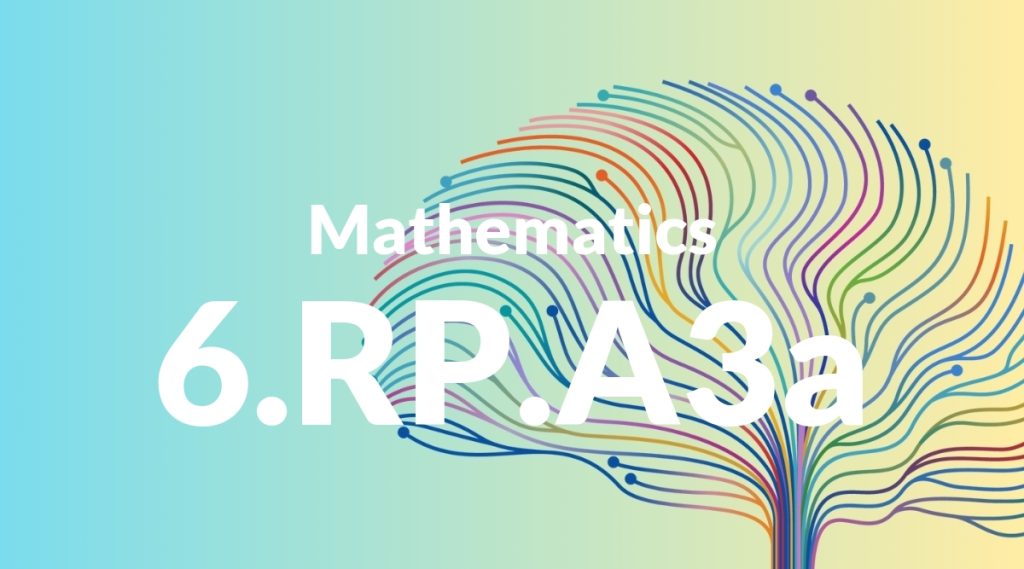Standard: 6.RP.A3a – Make tables of equivalent ratios relating quantities with whole-number measurements, find missing values in the tables, and plot the pairs of values on the coordinate plane. Use tables to compare ratios.
Grade level: Grade 6
Subject: Mathematics
Domain: Ratios & Proportional Relationships
Teacher Overview
This standard focuses on helping students understand equivalent ratios and how to represent them using tables and coordinate planes. It is crucial as it lays the foundation for proportional reasoning, a key concept in higher mathematics. Students should have a solid grasp of multiplication, division, and fractions, as well as basic skills in plotting points on a coordinate plane.
Mastering this standard prepares students for future topics involving proportional relationships in different mathematical contexts, including geometry and algebra.
Common Misconception 1
Some students may think that ratios are only relevant in certain contexts, such as cooking or sports. This is incorrect because ratios can describe any relationship between two quantities.
Intervention 1
Use a variety of examples from different contexts, such as speed (distance/time), density (mass/volume), and unit rates (price/quantity), to demonstrate the broad applicability of ratios.
Common Misconception 2
There is often confusion between ratios and fractions. While both compare quantities, a ratio compares two separate quantities, whereas a fraction represents a part of a whole.
Intervention 2
Create visual aids that differentiate between ratios and fractions, and use real-world examples to illustrate the differences.
Prerequisite Knowledge
Students should understand basic multiplication and division, have familiarity with fractions, and be able to plot points on a coordinate plane.
Subsequent Knowledge
After mastering this standard, students will be able to solve more complex problems involving proportional relationships, including those with different units and in various contexts such as geometry and algebra.
Instructional Activities
- Create tables of equivalent ratios using everyday examples like recipes or travel distances.
- Plot equivalent ratios on a coordinate plane and discuss the patterns observed.
- Compare different sets of ratios using tables to determine which are equivalent.




